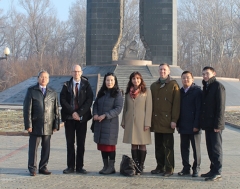“Rock Star” Institute Scientist-in-Residence Adds Breakthrough Prize to Nobel for Work on Neutrinos
A team of physicists including the Middlebury Institute’s Dr. Ferenc Dalnoki-Veress was awarded the Breakthrough Prize for the same neutrino research that recently won them a Nobel Prize.

